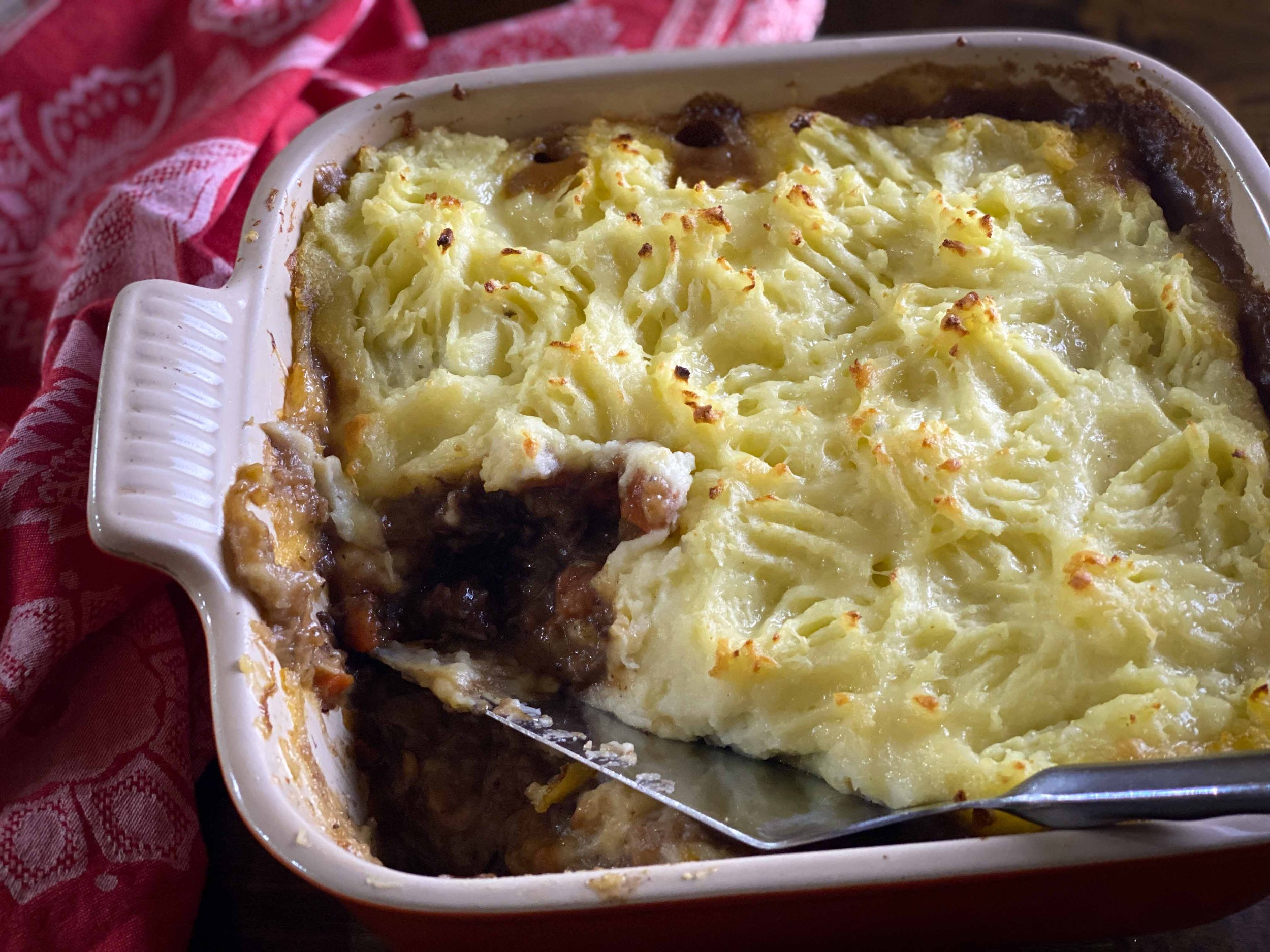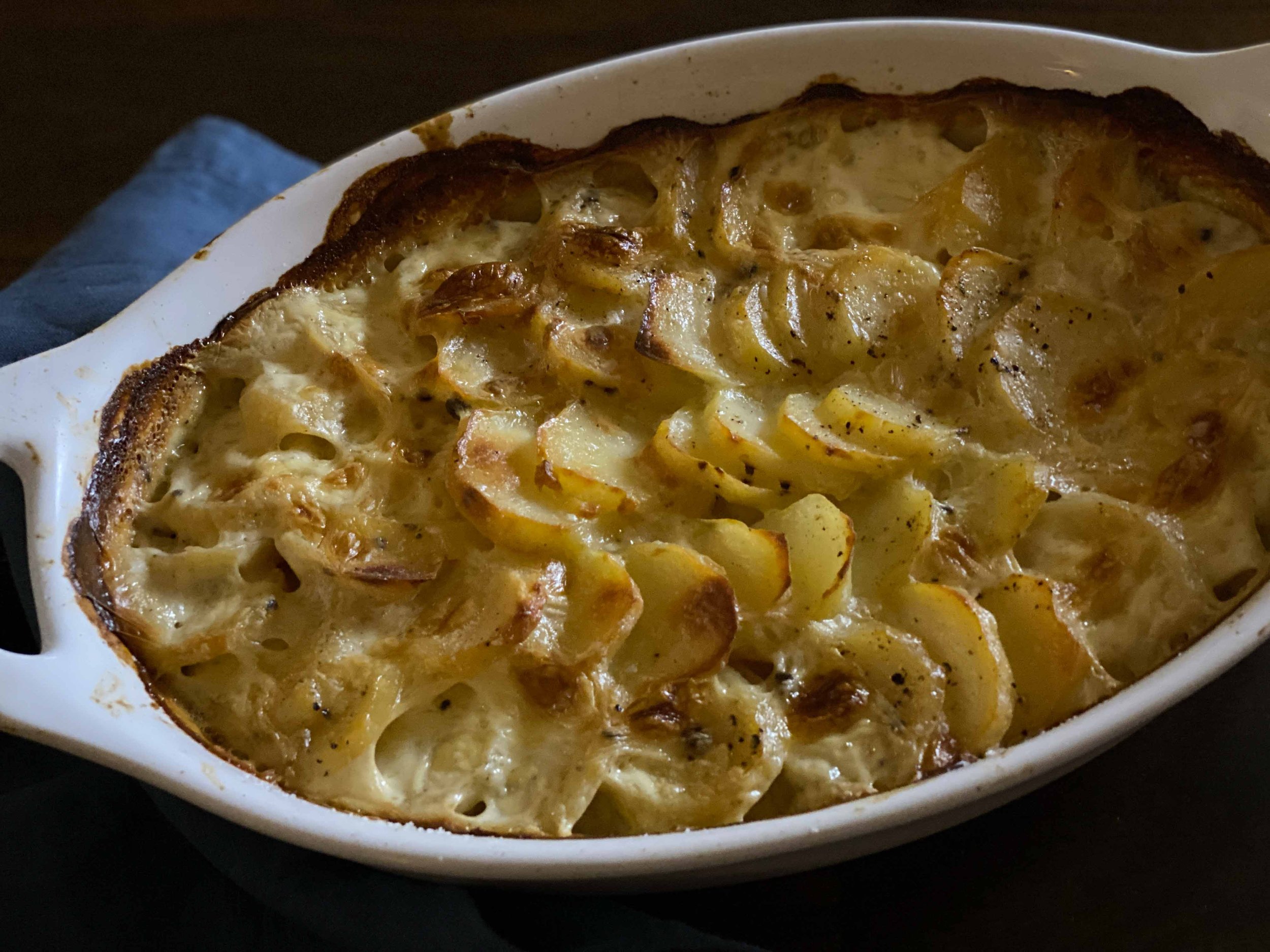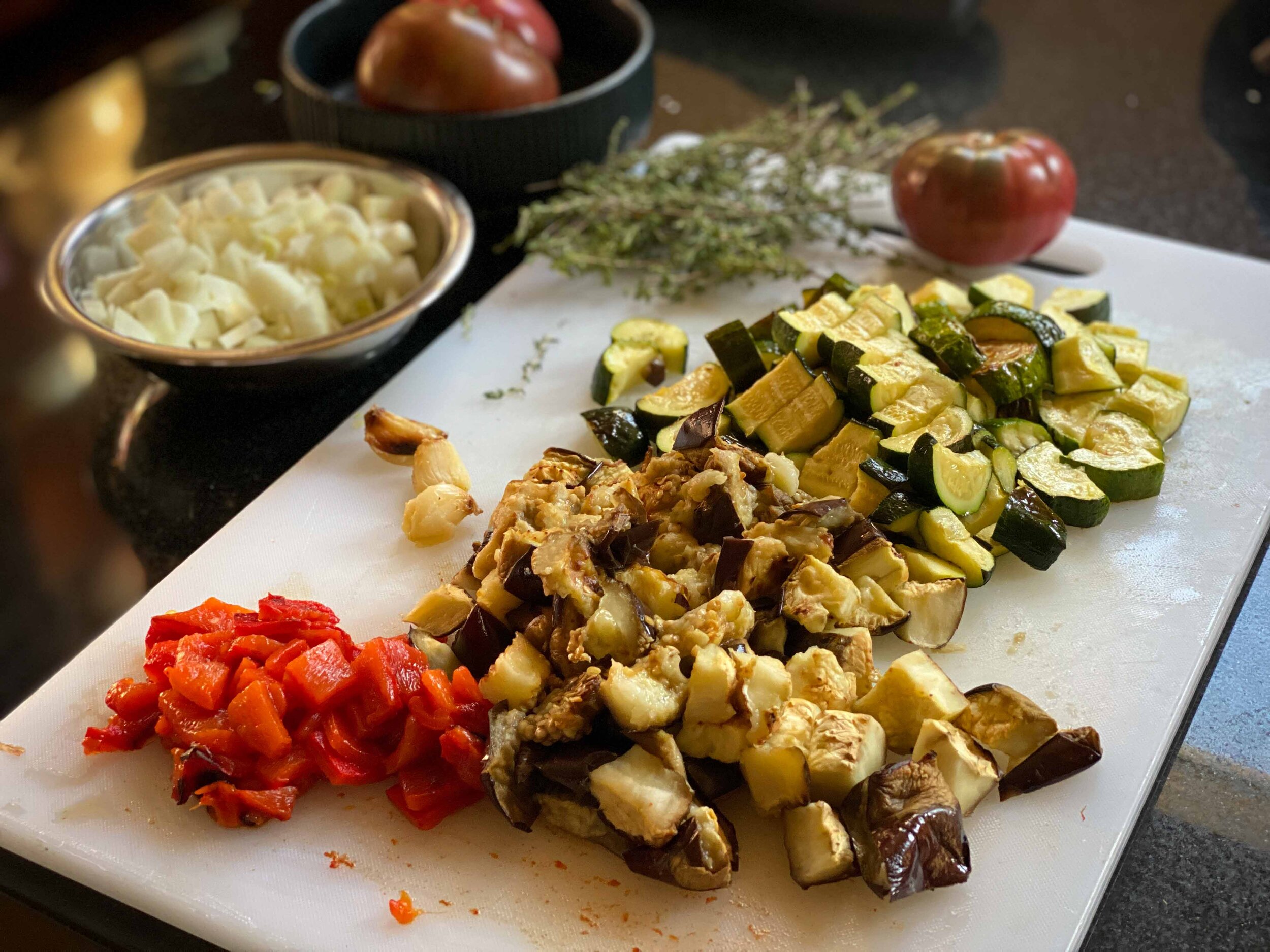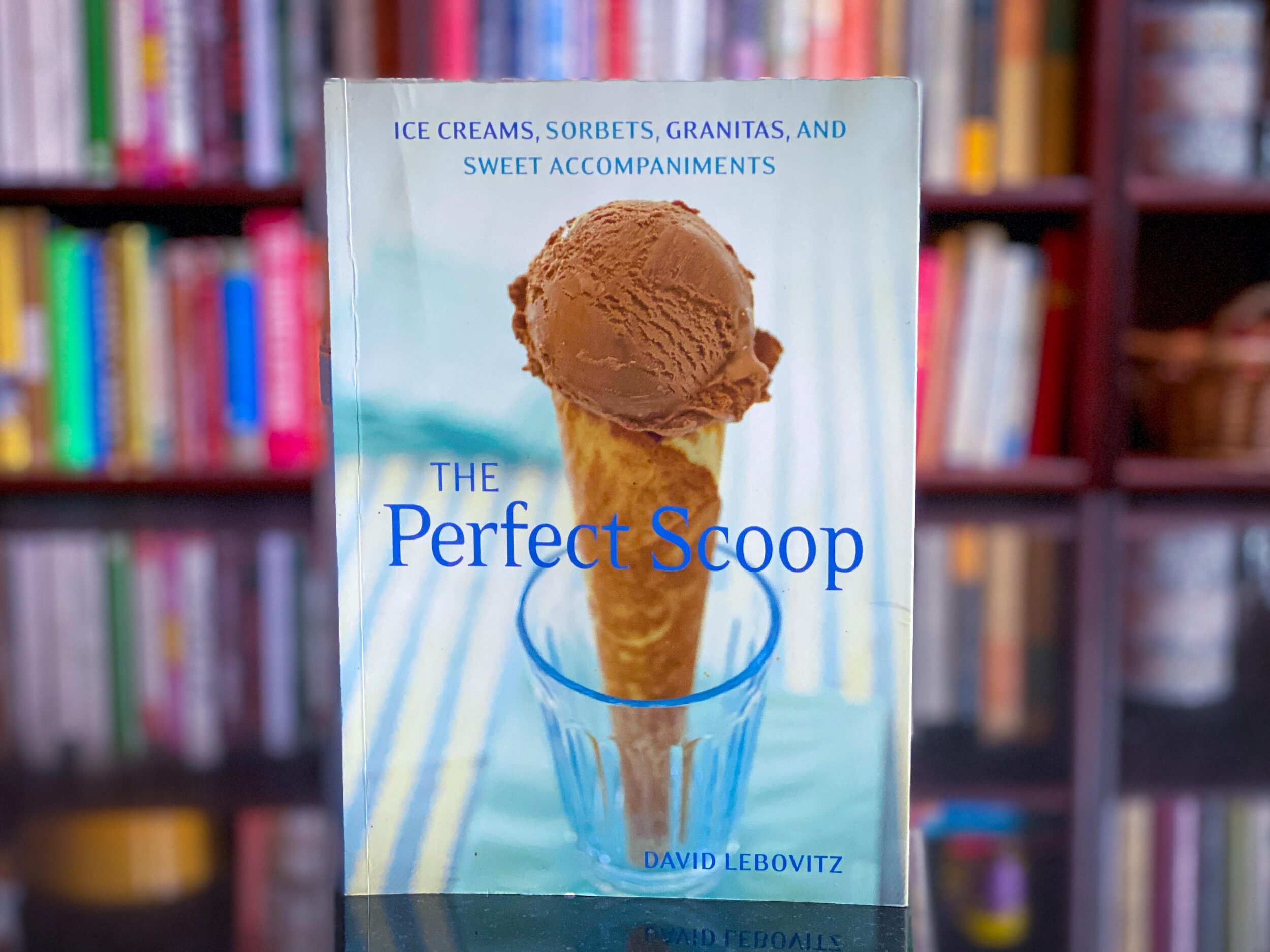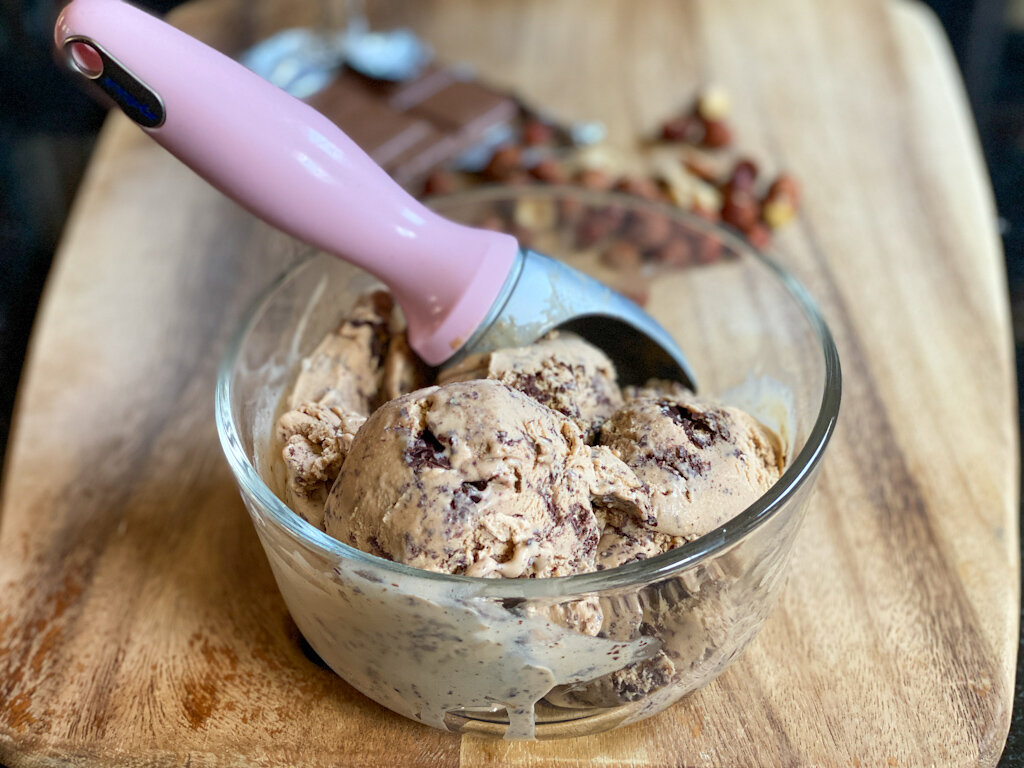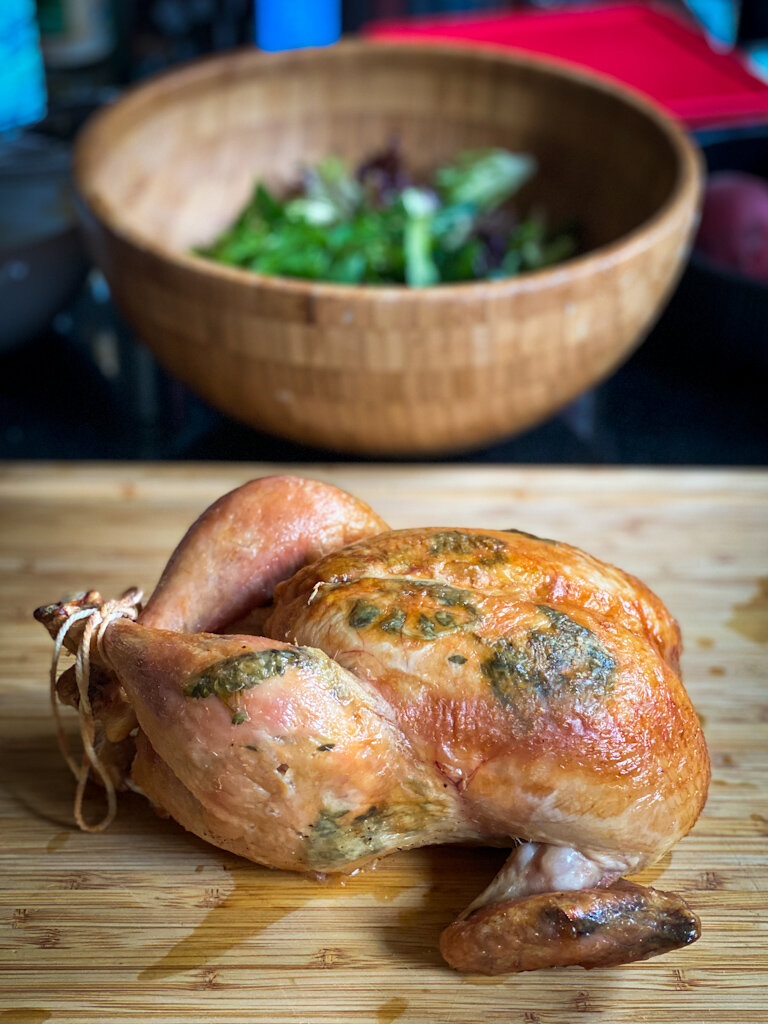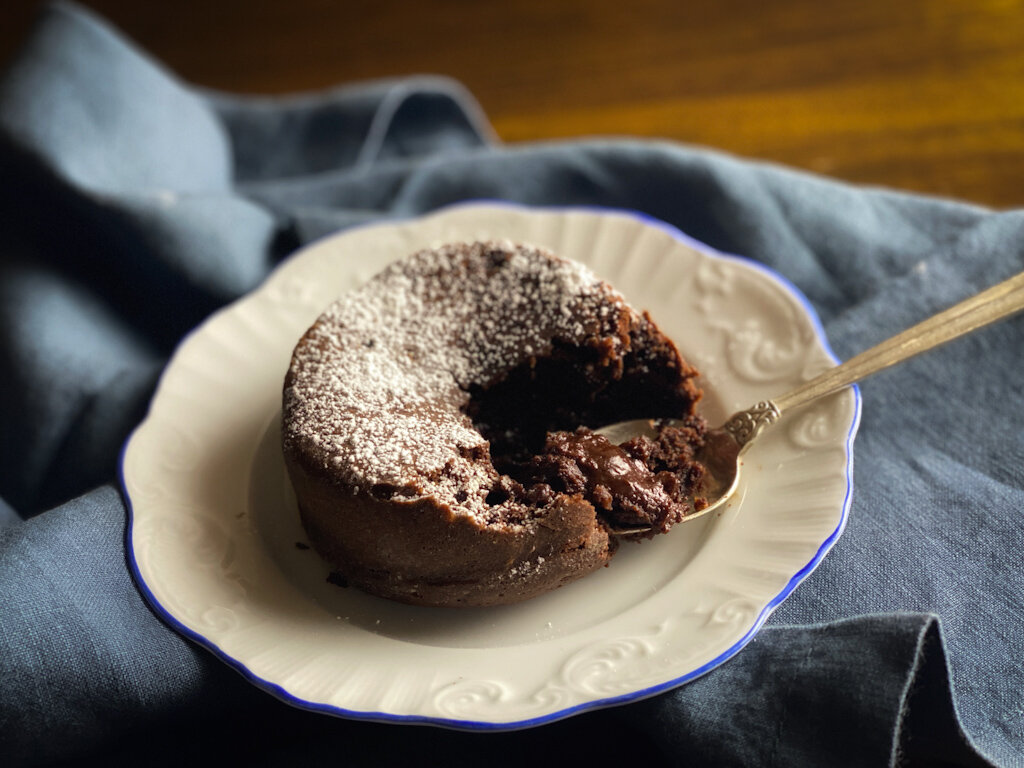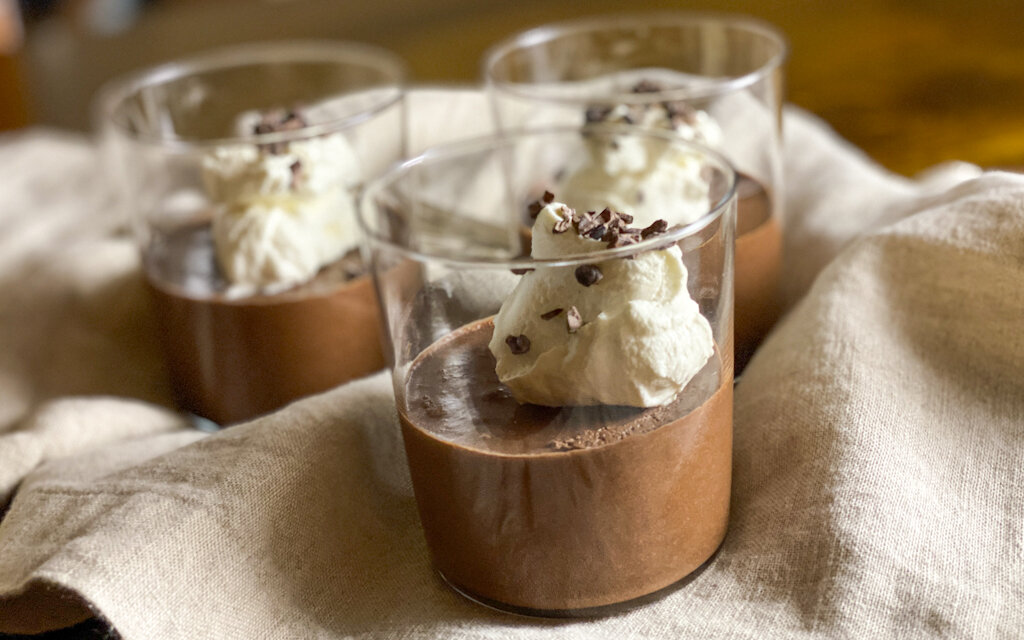By Leslie Brenner
The dish known as hachis Parmentier is decidedly not one of France’s sexier dishes. In fact, it’s not a sexy or aspirational dish at all. At least I didn’t think it was — until I heard of one I simply had to have.
Traditionally, hachis Parmentier was leftover pot roast chopped up (hâcher means to chop), covered with mashed potatoes and baked. Today, most French people know the dish as a layer of sautéed ground beef in a baking dish topped with mashed potatoes, then browned in the oven. The beef may have some chopped onion and carrot in it, but that’s as fancy as it usually gets. In other words, it’s more or less shepherd’s pie.
That’s why when I read that Daniel Boulud, New York City’s superstar French chef, has a thing for hachis Parmentier, I was dying to hear how he approaches it.
I had been researching the dish, looking for recipes from cookbook authors I admire, and found one in Dorie Greenspan’s excellent Around my French Table. Dorie’s headnote led with an anecdote. She and her husband were lucky enough, some years back, to have Boulud cook a meal for them. “It was luxurious,” she wrote:
“and at the end of it, after thanking Daniel endlessly, I asked him what he was going to have for dinner. ‘Hachis Parmentier,’ he said with the kind of anticipatory delight usually seen only in children who’ve been told they can have ice cream. We had just had lobster and truffles, but Daniel was about to have the French version of shepherd’s pie, and you could tell he was going to love it.”
I had to have it! I’d already scoured the four Daniel Boulud cookbooks on my shelves without turning up a recipe; next I searched online. Nada.
So I emailed him, asking the Lyon-born, world-renowned, double-Michelin-starred chef — who was recently named the best restaurateur on the planet — if he had a recipe he might share with Cooks Without Borders. Thrillingly, he did! (Thank you, Daniel! And thank you, Daniel’s wonderful team!)
Daniel Boulud’s recipe
Ground beef? Nah — Daniel’s recipe starts with cubes of boneless ribeye steak. Which you marinate in Burgundy wine. The meat gets seared, then diced onions, carrots and parsnips are sweated, and all of it gets simmered for hours with the Burgundy (which you reduce way down first), combined with veal stock flavored with a bouquet garni with herbs, garlic and peppercorns.
“Hachis parmentier is all about how you build your sauce and flavors,” Daniel had written in the headnote. “It is a baked dish that starts with humble ingredients and simple techniques. I love to expand my version with the deep and rich flavors of Boeuf Bourguignon under a layer of creamy mashed potatoes topped with nutty Gruyère cheese.”
Those mashed potatoes? They’re not just figuratively creamy; they’re enriched with lots of butter and cream.
“Nothing warms your soul like the anticipation of this casserole on a cold winter’s day,” Daniel added. You can say that again.
Unless you’re a lot wealthier than I am (ribeye is expensive!) you won’t be making this dish on a random Tuesday; it’s special enough for dinner party fare. I confess I did not open a bottle of Burgundy for the sauce (don’t tell Daniel!); I used a $14 French pinot noir instead. The pinot was decent enough that I bought a second bottle to drink with the finished hachis Parmentier.
Meltingly tender after its hours of marinating and slow braising, the ribeye had fabulous flavor — this was by far the most luxurious beef stew I’ve ever simmered. I didn’t have veal stock (unless you’re a chef, odds are you don’t either), so instead used Daniel’s recommended second choice: store-bought beef broth boosted with veal demi-glace. (D’Artagnan makes a good demi-glace that you can buy online or find in some higher-end supermarkets.) You need that boosting because the sauce has to be substantial enough that it holds the meat together under the potatoes and doesn’t run all over the plate when you serve it. The natural gelatin in demi-glace (and also in veal stock) adds the right body, as well as a lot of flavor.
Because the dish is so expensive (even with the pinot swapped for Burgundy, the ingredients totaled more than $60), I wondered how it would be with a less pricey cut of beef. So I made it again — substituting chuck for the ribeye.
It was good — and I do recommend that if you’re keeping to a budget. But it’s considerably less special than Daniel’s original.
Without further adieu, here is Chef Boulud’s recipe. After that, we’ll dive into some of hachis Parmentier’s finer points and history, so unless you want to geek out with me, you may now be excused from the table.
What sent me down the H.P. rabbit hole
The recipe that started me on the hachier Parmentier mission was one in World Food: Paris, published last year by James Oseland. The dish was delicious (I love the idea of adding umami and body to ground beef with oyster sauce), but the recipe had some small technical issues. It whetted my appetite for it, though, and piqued my curiosity about what the dish could be in its best expression.
Read “Cookbooks We Love: James Oseland’s new ‘World Food’ title celebrates the iconic dishes of Paris”
Though I’m married to a Frenchman and have spent a lot of time in France over the decades, hachis Parmentier is not something I’d ever been served there — too homey, probably, to serve to a guest.
When we were in Bordeaux last summer, I picked up a copy of Le Grand Livre de La Cuisine Française: Recettes Bourgeoises & Populaire, by the renowned Paris chef Jean-François Piège. It’s a mammoth tome of nearly 1,100 pages, published just about a year ago. Basically it defines, catalogues and provides recipes for the French canon of standard dishes (in French only; it has not been translated). And yes — among its 1,000-plus recipes is one for hachis Parmentier. The beef cut: “3 grosses joues de boeuf” — three big beef cheeks. One is instructed to cook them for two and a half or three hours in red wine and veal stock till they’re “très fondantes” (very melty). Piège has you pull the braised beef cheeks apart with your fingers, then enrobe them in strained-and-seasoned braising liquid to which you add chopped parsley. Lay that in an oven-to-table baking dish, cover with brunoise (tiny dice) of onion, carrot and celery that’s been gently cooked in butter, top with potato purée, then with bread crumbs you’ve tossed with chopped garlic and grated comté cheese. Bake until the top has a “belle croûte dorée” — a beautiful golden crust. Et voilà.
Beef cheeks: Not the easiest cut for home cooks to find, and the recipe assumes much more cooking knowledge than most American home cooks will possess.
Wait, what about Dorie’s version?
So glad you asked! Dorie called for either cube steak or chuck in the version that follows the diverting headnote in Around My French Table. After simmering the meat, she chops it up — then adds pork sausage to the filling, which no doubt amps up the flavor and adds richness. Her hachis Parmentier looks very good; I look forward to trying it one day soon.
That’s about all I’ve got on the hachis. That leaves the Parmentier!
France’s permanent potato prince
Any French dish with “Parmentier” in its name necessarily involves potatoes. That’s because in the 18th century, Antoine Augustin Parmentier, a French agronomist and pharmacist, won a prize in 1773 offered by the Academy of Besançon for the discovery of plants that could be useful during times of famine, according to Larousse Gastronomique. Parmentier’s plant of choice: the potato.
Prior to that time, the French considered potatoes to be unwholesome and indigestible, suitable only for animal feed or to nourish poor people. Parmentier extolled potatoes’ nutritive virtues, and didn’t fail to let people know that they also taste really good. After winning the prize, Parmentier popularized the potato, publishing booklets about its uses and cultivation. He famously prepared a dinner for visiting statesman Benjamin Franklin starring a potato-centric menu, putting the potato permanently on France’s culinary map.
“For a time the potato itself was known as the parmentière in his honour,” Larousse recounts, “and he gave his name to various culinary preparations based on potatoes, especially hachis Parmentier — chopped beef covered with puréed potatoes and browned in the oven.”
And so we come full circle. The recipe that follows in Larousse goes roughly like this: “Dice or coarsely chop” boiled or braised beef. Cook lots of chopped onion in butter, sprinkle with a little flour, cook till lightly brown, add beef stock, cook down a bit, then add the chopped beef. Put the beef and onions in a gratin dish, cover with potato purée, top with breadcrumbs, moisten with melted butter and brown in the oven. “Although it is not traditional, a small cup of very reduced tomato sauce can be added to the chopped meat and a little grated cheese may be mixed with the breadcrumbs.”
I’ll be making Daniel’s recipe again before long, I suspect. I might even make veal stock to use as its foundation, should veal bones present themselves. Hard to imagine another version with such luxurious depth.
Maybe I’ll even spring for a bottle of Burgundy. No, not for the braising liquid, but to honor the finished — and fabulous — dish.
If you enjoyed this story, you might like:
READ: “Celebrating in place? Try Daniel Boulud’s Short Ribs Braised in Red Wine”
READ: “To make a traditional gratin dauphinois, back away from the cheese”
Want to receive our recipes in your in-box? Sign up for our free newsletter.

